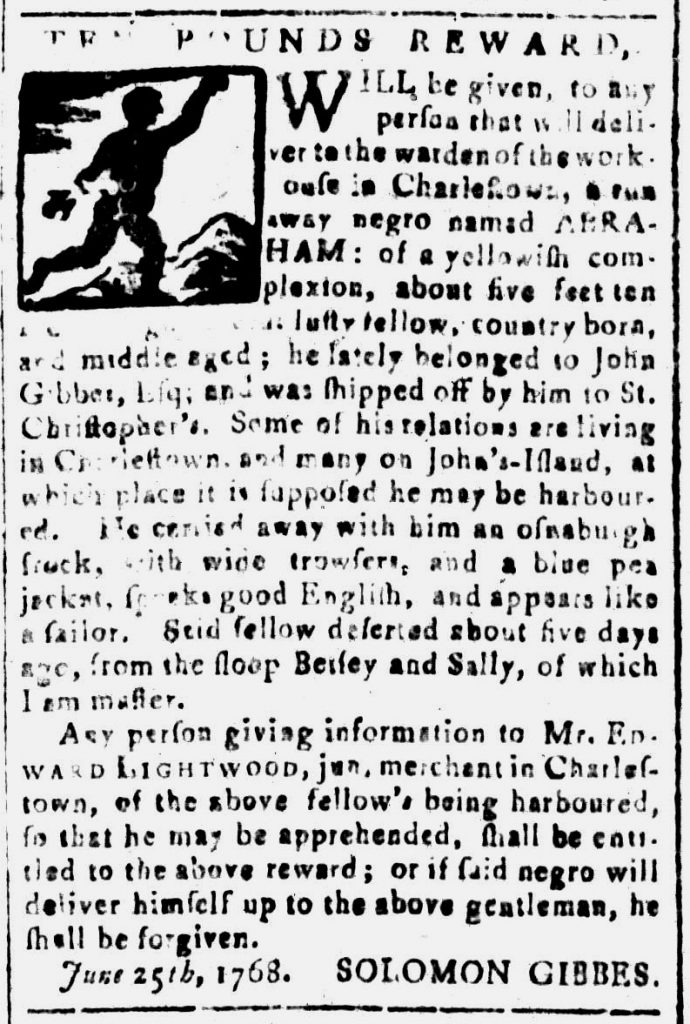What was advertised in a colonial American newspaper 250 years ago this week?

“Jolley Allen, At his Shop almost opposite the Heart and Crown, in Cornhill, Boston.”
Almost without exception, shopkeeper Jolley Allen used bold visual elements to distinguish his advertisements from others that appeared in Boston’s newspapers in the late 1760s. Sometimes he arranged to have borders composed of printing ornaments surround his advertisements. Other times he dominated the page with lengthy list-style advertisements that included his name in a font that far exceeded the size of anything else printed in the newspaper. To add further interest, designs derived from printing ornaments flanked his name, making the graphic design elements of his advertisements even more distinctive.
Such was the case in the summer of 1768 when Allen once again published advertisements that filled two out of three columns on a page, this time in the Boston Weekly News-Letter. He had launched this strategy late in the previous summer. For the new iteration he maintained the format but updated the copy. In addition to the decorative elements that headlined his notice, he also inserted manicules to direct attention to specific merchandise or promotions. For instance, one manicule pointed to “Cotton Wool, very good and very cheap.” Another directed readers to “Choice Jamaica and other brown Sugars, by the barrel, hundred or smaller Quantity, some as low as 3s. O.T. per single pound, and cheaper by the Quantity.”
Allen even deployed double manicules – one at the beginning of the sentence and another at the end – to draw attention to the most significant appeals aimed at convincing readers to make their purchases from him. In one case, he proclaimed, “The above TEA is warranted of the best Kind, and if it proves otherwise, after trying it, will be taken back and the Money returned, by the said JOLLEY ALLEN.” The manicules made it less likely that prospective customers would miss this generous money-back guarantee. The advertisement concluded with an appeal reprinted from the previous iteration, this time with double manicules to draw greater attention. In it, Allen advised that his “Town and Country Customers, and others, may depend upon being supply’d with all the above Articles the Year round … as cheap in P[r]oportion as those which have the Prices fixed to them.” Unlike most merchants and shopkeepers, Allen did indicate prices for several items in his advertisement.
It might be tempting to dismiss the placement of the manicules and other visual aspects as haphazard or accidental, especially since compositors rather than advertisers generally determined the layout and other graphic design elements of advertisements. However, the consistency demonstrated in Allen’s advertisements from newspaper to newspaper suggests that he carefully consulted with compositors in order to achieve the visual elements important to him. Not all eighteenth-century advertisers left it to the printing office to determine how their notices would appear on the page.

















